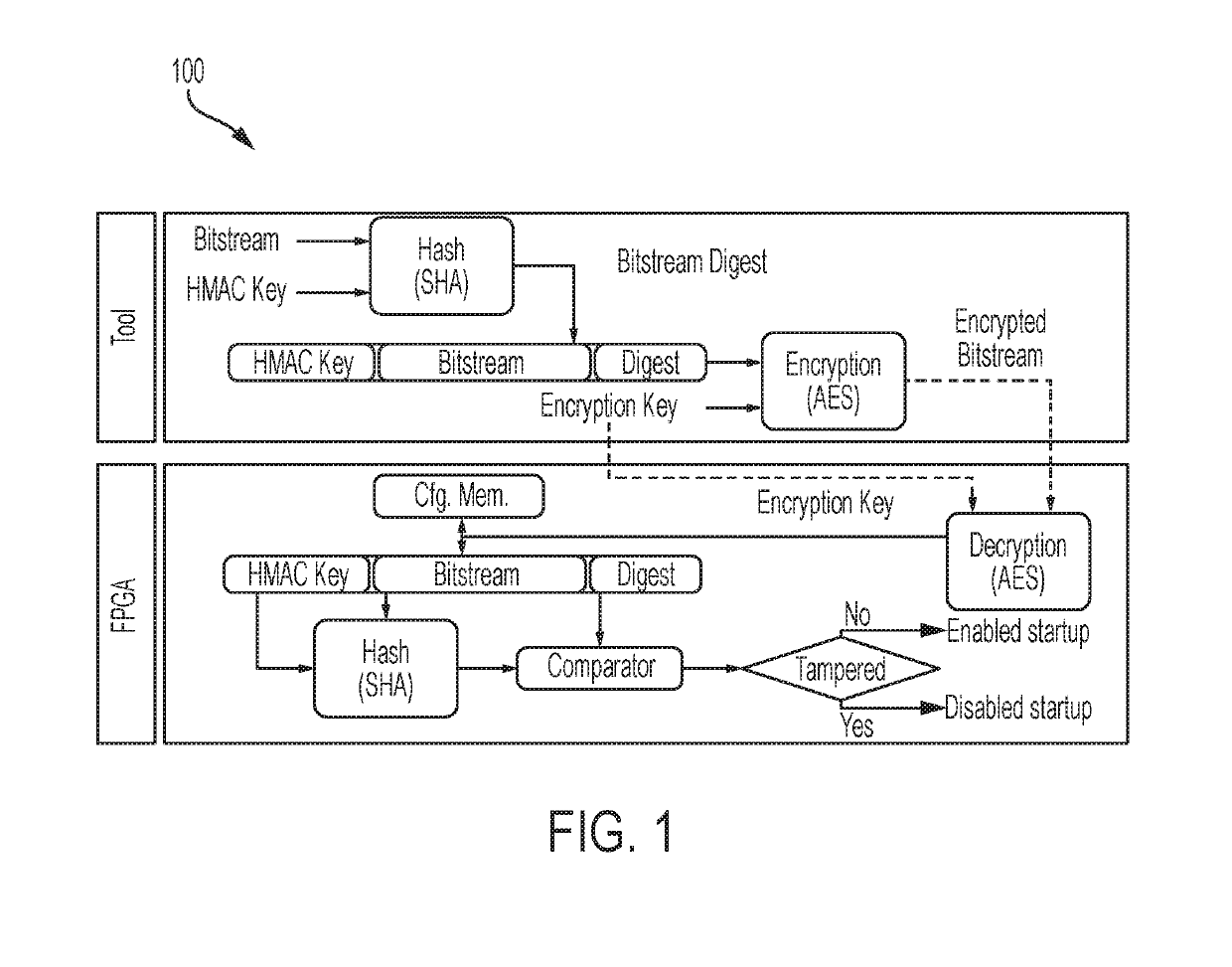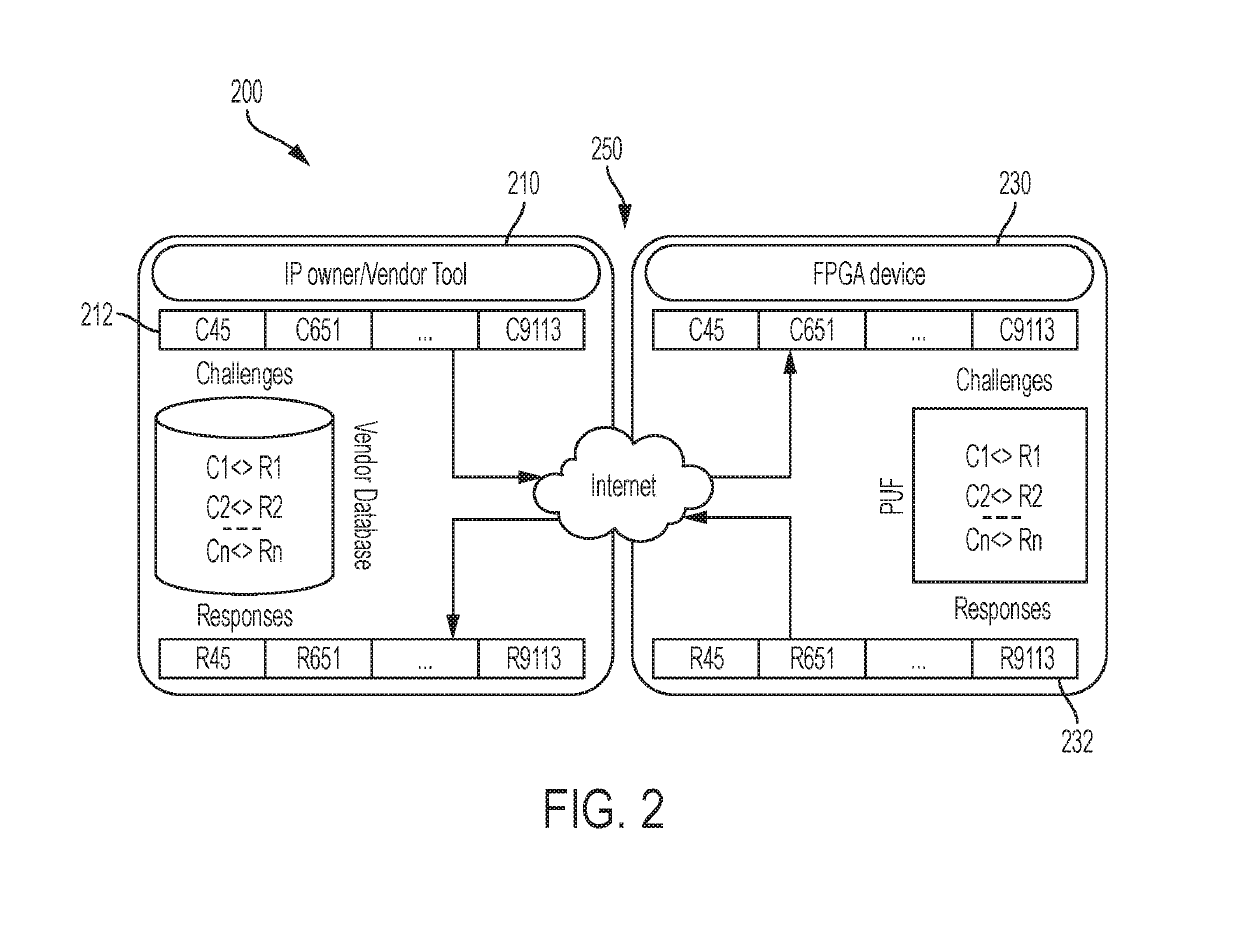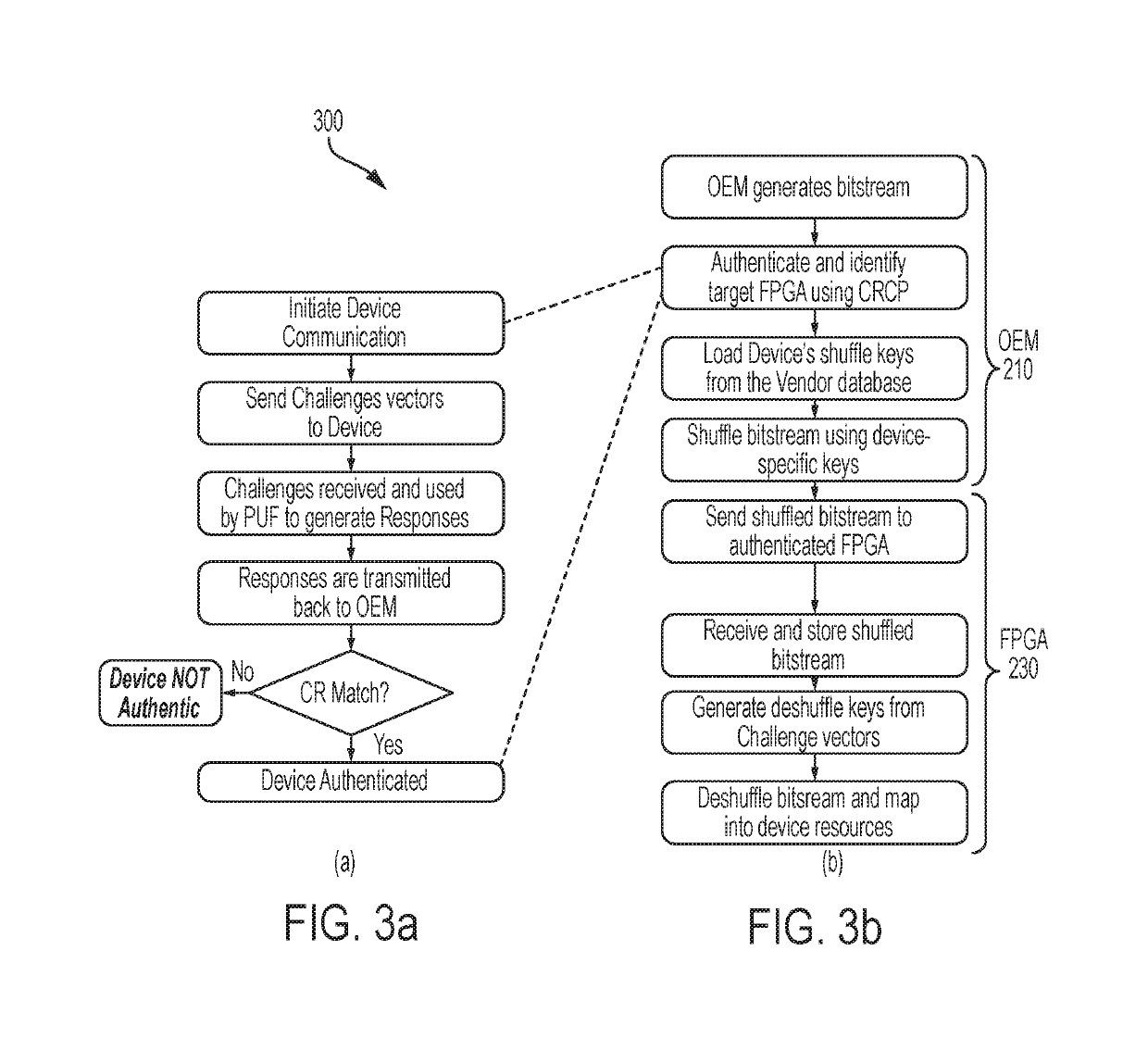Bitstream security based on node locking
a node locking and bitstream technology, applied in the direction of program/content distribution protection, logic circuits using specific components, pulse techniques, etc., can solve the problems of unauthorized reprogramming, cloning/piracy, and unauthorized reprogramming of fpga bitstreams
- Summary
- Abstract
- Description
- Claims
- Application Information
AI Technical Summary
Benefits of technology
Problems solved by technology
Method used
Image
Examples
example case 1.1.1
[0065]The attacker has, by some means, obtained a copy of the transformed bitstream.
[0066]Result: Without knowledge of the bitstream structure (e.g. fixed header contents), the attacker cannot identify the correct inverse transform key, even for Level 1. Thus, a brute force attack cannot be properly mounted, and the IP remains secure.
example case 1.1.2
[0067]The attacker has a copy of the transformed bit-stream and knows the bitstream structure (e.g. typical contents of the header).
[0068]Result: The attacker can mount a brute force attack and attempt to deduce the Level 1 transform key. In this example, a 128 bit key may operate on 16 bit blocks, each of which is permuted using 4 bits. Thus, the number of possible permutations for each of the (128 / 4=32) blocks is 1632=2128. This provides the first level of defense. Even if this is broken, Levels 2 and 3 are intact and the IF remains secure.
example case 1.1.3
[0069]The attacker begins with a Level 1 inverse transformed bitstream, and intends to break Levels 2 and 3.
[0070]Result: A Level 1 inverse transformed bitstream may be mapped to an FPGA or simulated using a bitstream-to-netlist tool. For each possible combination of the LUT inputs and outputs, the attacker performs the conversion, provides the proper stimuli, and observes I / O patterns. Without detailed knowledge of the intended functionality, or a sufficiently large set of test vectors, the process cannot be automated. Even with sufficient test vectors, brute force is not feasible: in an example of a set of 4×1 LUTs with four content bits and the possibility that some of the content bits may be inverted, the LUT can take 1 of L!×I possible states, where L is the LUT size, and I is the number of possible inversions.
[0071]I is computed as Σr=1L LCr, which for L=4 gives 15 inversions; thus, each LUT can take 1 of 4!×15=360 combinations. Transforming the 4 bit LUT requires 2 bits of th...
PUM
 Login to View More
Login to View More Abstract
Description
Claims
Application Information
 Login to View More
Login to View More - R&D
- Intellectual Property
- Life Sciences
- Materials
- Tech Scout
- Unparalleled Data Quality
- Higher Quality Content
- 60% Fewer Hallucinations
Browse by: Latest US Patents, China's latest patents, Technical Efficacy Thesaurus, Application Domain, Technology Topic, Popular Technical Reports.
© 2025 PatSnap. All rights reserved.Legal|Privacy policy|Modern Slavery Act Transparency Statement|Sitemap|About US| Contact US: help@patsnap.com



